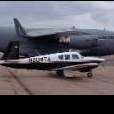-
Posts
85 -
Joined
-
Last visited
-
Days Won
1
N204TA last won the day on September 27 2024
N204TA had the most liked content!
The recent visitors block is disabled and is not being shown to other users.

N204TA replied to MikeOH's topic in General Mooney Talk

N204TA replied to Shadrach's topic in Miscellaneous Aviation Talk

N204TA replied to bigmo's topic in Vintage Mooneys (pre-J models)

N204TA replied to bigmo's topic in Vintage Mooneys (pre-J models)

N204TA replied to HRM's topic in Vintage Mooneys (pre-J models)

N204TA replied to bigmo's topic in Vintage Mooneys (pre-J models)

N204TA replied to BrettC113's topic in Vintage Mooneys (pre-J models)
We have placed cookies on your device to help make this website better. You can adjust your cookie settings, otherwise we'll assume you're okay to continue.